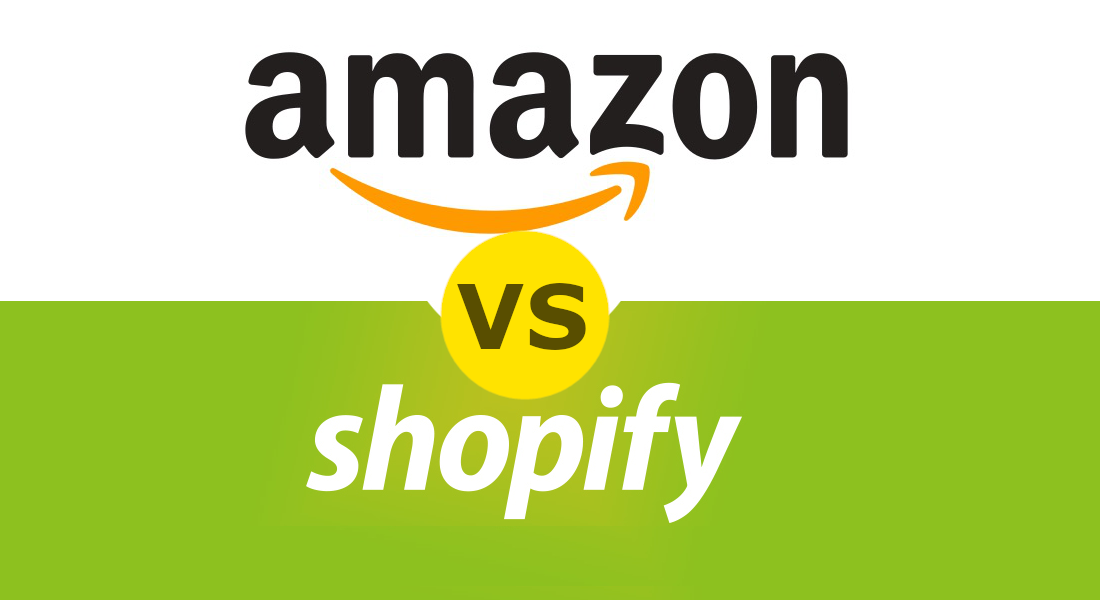
Choosing the electronic shopping channel to work better for you is one of the most important options you make when selling your goods online. You certainly would look at Amazon FBA vs Shopify and ask what you should choose when you make this decision, since they are two of the most popular ecommerce players around.
Both Shopify and Amazon have built huge renown, with over 800,000 firms and 2.5 billion users a month from Amazon. This impressive numbers make it difficult for most entrepreneurs, since both sites are reliable in ecommerce.
Amazon vs. Shopify: the Difference
![]()
Let’s take these two channels into account. Amazon and Shopify may seem to be very different, and honestly so they are! Shopify works on creating and designing a shop from scratch. Amazon is a ready-made ‘marketplace.’
That is, Amazon is easily attracted by shoppers to the single online market, which can target millions of potential consumers internationally, while Shopify merely provides you with the tools for creating a separate website instead of positioning yourself before customers too.
This might seem to be the biggest difference. After all, if Amazon has already an outstanding reputation and an immense client, after which you will definitely be able to tap into the decision?
Well, not absolutely, but there is clearly something you must offer in order to reach Amazon’s customer base. You will give Amazon a share of all purchases.
You’ll still have to conform as you would expect to their laws. Shopify on the other hand, though you are forced to sell your shop after you have planned and constructed your shop because there is no ready-made traffic, it makes for more benefit and you would not give up a commission. He’s an uncomfortable guy, isn’t he?
This is why these significant differences make comparing Amazon and Shopify challenging. What you will find by contrasting Amazon to Shopify, is a deeper picture of the site that suits you and your particular business model.
The Advantages and Disadvantages of Selling with Shopify:

Let’s discuss a bit more about Shopify: it is a leading eco-commerce website, as you would imagine, which enables young entrepreneurs to launch their online shop without any technological expertise.
It is an excellent place to get started, even for newbies who want to start an online company with very little ability because of its ease, user-friendliness and many design elements. Shopify is all concerned with creating your own premium platform.
Naturally this means you’re not going to deal with someone else specifically because you own the shop. As this sounds nice, note that it’s thrilling to create your shop, but when you know that you need to find buyers and push the traffic to the store.
It must be said that Shopify is the e-company site with a wide range of advantages.
Advantages
- Free trial of 90 days
- Simple to use.
- Smooth architecture
- An economic way to develop your online shop
- Your shop is yours.

- Have the complete charge of you shop/store
- Effective tools and applications for E-commerce
- Simple to establish your brand identity
- User – friendly shop
- Way to make a big business
- Payments for Free Store
Briefly, the pros keep coming for Shopify! The basic planning, designing and building your hops will be made available free for 90 days. You will use payment shops at this period, which still cost zero, so you’ll know how a retail shop can work for you. Since it is a scalable forum for e-commerce tools, applications and technologies, from day one you can create and grow your brand presence very quickly.
Disadvantages
- You have to marketize yourself
- Marketing prices potentially rise
- No piggyback credibility
- Monthly charges are raised with the use of additional tools
- The simple plan would not have access to reports
- If a third-party service processor is used for processing fees
To put it briefly: The most critical part of Shopify is the massive challenge of selling the business after constructing it. Marketing is a complete job, and it won’t take time, resources and money to promote the brand and start selling you on a website like Amazon.
You will still not get any reports on the simple package, so you must monitor the details yourself. Often note that you can charge a processing fee on all transactions if you do not use Shopify payments.
The Advantages and Disadvantages of Selling on Amazon FBA:
Let’s see Amazon now. Amazon is still the leading website to be used, but it can be tedious to list a product and add photos because several back-end parts are required.

Like Shopify, it is the ideal location for beginning newbie with little technological knowledge in particular. Now you might also think that while Shopify has a lot of supporters, Amazon looks more secure because it provides FBA as a ready-made platform and, of course, a prestige beyond your furious dreams. Let’s see that.
Advantages
- Free 30-day Pro Account Trial
- Access to a global audience instantly
- Brand credibility ready-made
- Setup and quickly run sales
- Simple access to motivated customers
- Customer experience incorporated
- Facilities for discounts and returns
- Data from sales records
- FBA accessible service
pIn brief: You can test Amazon pro for 30 days, so that you can start marketing to a worldwide audience directly by setting up your product page. In reality, you could list a product and sell it in an hour!
The implementation process is slower if you want to register with FBA because your goods are delivered to a dedicated Amazon warehouse so you can protect not just your warehousing and completion, but also your customer support, any refunds and repayment, so it is absolutely hands-off for you.
Disadvantages
- Amazon charges for each sale round (15% – 40%)
- You have to respect the laws of Amazon or suspension of danger
- This network is really saturated
- You will not have complete power over your shop/store
- No choices for design
- Competitors’ undermining strategies
To sum up: Amazon’s charges can seem to be swallowed very dramatically when keeping in mind that you are targeting a ready-made crowd. In tandem with a heavily crowded platform with certain types, limitations and clearly undercutting by rivals, the fees could not value the additional services rendered.
Fees for Amazon versus shopify Fees
It is not unexpected that fees would play a major role in the decision-making process when it comes to the comparison of Amazon versus Shopify. Benefits are important to your ecommerce business’ growth and you want the highest deal. A pro account with Amazon charges you £25 plus VAT per month, which is usually 15 per cent of your purchase fee.

Of course your platform expenditures would be higher – closer to 35% – if you choose FBA, when you have to make further investments and performance costs. Both payments are subject to varying product specifications. For eg, you are charged £4.50 in purchase commissions for any product that you sell depending on the sale of a product at £29.99 along with your monthly account charge. The FBA will bill you about £9.90 for sales and delivery costs.
Again, the main charge will be the annual plan rate if you have a product sold at £29.99 and fees for Shopify. It seems like no brainer, isn’t it? However, zero sale fees are a profit only if you deal! Therefore, the higher Amazon website selling prices must be calculated against Amazon’s traffic.


